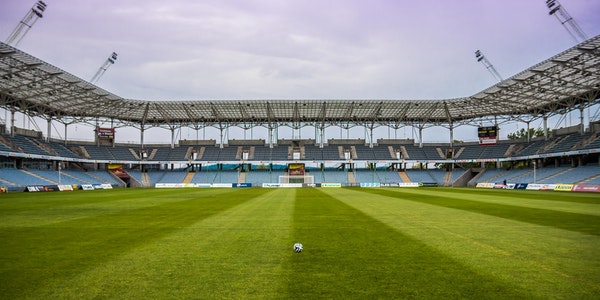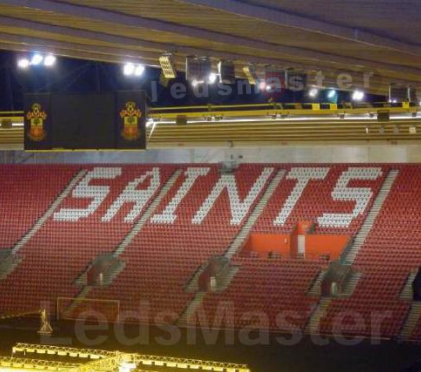3. Sustainable Materials and Manufacturing: Continued advancements in LED technology are expected to focus on sustainability, including the development of eco-friendly materials, recyclable components, and energy-efficient manufacturing processes. Efforts to reduce the environmental footprint of LED lighting systems align with global sustainability initiatives and drive the adoption of green building practices in athletic facilities.
In summary, ongoing advancements in LED technology are reshaping the landscape of athletic facility lighting, offering unprecedented opportunities for performance enhancement, energy efficiency, and user experience. By embracing these innovations, athletic facilities can stay at the forefront of lighting design and provide athletes and staff with optimal training environments that support their health, safety, and success.
B. Integration with other smart technologies for comprehensive facility management
Integration with other smart technologies for comprehensive facility management is a key trend in modern athletic facilities, enabling seamless coordination and optimization of various building systems. Here’s how LED lighting systems integrate with other smart technologies for comprehensive facility management:
- Building Automation Systems (BAS): LED lighting systems can be integrated with BAS to centralize control and management of building operations. Through interoperability with BAS platforms, lighting schedules, occupancy sensors, and energy usage data from LED fixtures can be synchronized with HVAC, security, and access control systems, enabling holistic facility management and energy optimization.
- Occupancy and Motion Sensors: LED lighting fixtures equipped with occupancy and motion sensors can detect the presence of occupants in different areas of the facility. Integration with smart building platforms allows lighting systems to respond dynamically to occupancy patterns, adjusting lighting levels and activating or deactivating fixtures as needed to maximize energy efficiency and user comfort.
- Environmental Monitoring Systems: LED lighting systems can interface with environmental monitoring systems to track indoor air quality, temperature, humidity, and other environmental parameters. By integrating lighting controls with real-time environmental data, facilities can optimize lighting conditions for occupant comfort, productivity, and well-being while maintaining indoor air quality standards.
- Energy Management Software: LED lighting systems can communicate with energy management software platforms to track energy usage, monitor performance metrics, and analyze trends over time. Integration with energy management software enables facilities to identify opportunities for energy savings, implement demand-response strategies, and optimize lighting schedules based on utility rates and consumption patterns.
- Digital Signage and Wayfinding Systems: LED lighting fixtures with integrated digital signage capabilities can serve dual functions as lighting sources and information displays. Integration with wayfinding systems and facility management software allows LED fixtures to provide directional guidance, event notifications, and emergency alerts, enhancing user experience and safety within the facility.
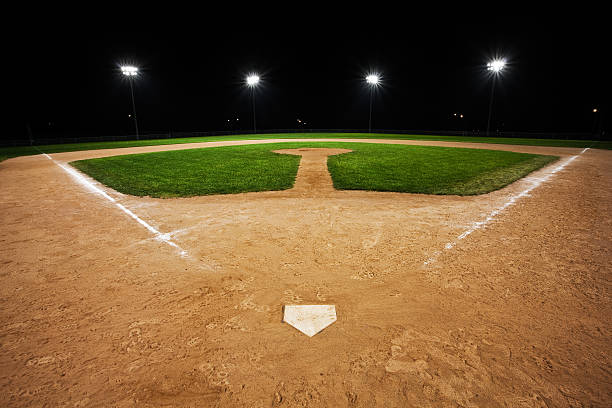
- Occupant Feedback Systems: LED lighting systems can support occupant feedback mechanisms through integration with smart building interfaces and mobile applications. Users can provide real-time feedback on lighting comfort, preferences, and satisfaction, allowing facility managers to adjust lighting settings and address occupant concerns promptly, improving overall user experience and engagement.
- Predictive Maintenance Platforms: LED lighting systems can contribute to predictive maintenance efforts by providing diagnostic data and performance analytics to predictive maintenance platforms. Integration with predictive maintenance software enables early detection of potential issues, proactive maintenance scheduling, and optimization of equipment lifecycle management, reducing downtime and enhancing system reliability.
By integrating LED lighting systems with other smart technologies for comprehensive facility management, athletic facilities can create intelligent, interconnected environments that optimize energy efficiency, enhance occupant comfort and safety, and support sustainable operations.
C. Potential for further customization and personalization of lighting solutions
The potential for further customization and personalization of lighting solutions in athletic facilities is vast, offering opportunities to tailor lighting environments to the specific needs and preferences of athletes, coaches, and staff. Here’s how LED lighting systems can be further customized and personalized:
- Individual Preferences: LED lighting systems can be equipped with user-friendly interfaces, such as mobile apps or touch panels, that allow individuals to customize lighting settings based on their preferences. Athletes, coaches, and staff can adjust parameters such as color temperature, intensity, and ambiance to create personalized lighting environments that support their activities and moods.
- Training Zones: Athletic facilities can segment training areas into different zones, each with its own lighting presets optimized for specific sports or training modalities. For example, a basketball court may have lighting settings tailored for shooting drills, defensive exercises, and scrimmages, allowing coaches to quickly switch between presets based on the training agenda.
- Circadian Rhythm Alignment: LED lighting systems can support circadian rhythm alignment by automatically adjusting color temperature and intensity throughout the day to mimic natural daylight patterns. Athletes and staff can benefit from personalized lighting schedules that promote wakefulness and alertness during training sessions and relaxation and sleepiness during rest periods.
- Biometric Feedback Integration: Advanced LED lighting systems can integrate with biometric sensors and wearable devices to monitor athletes’ physiological responses in real time. By analyzing biometric data, such as heart rate variability and cortisol levels, lighting solutions can dynamically adjust lighting parameters to optimize performance, recovery, and well-being based on individual needs.

- Event-Based Lighting: LED lighting systems can be programmed to respond to specific events or activities within the facility, creating immersive and interactive lighting experiences. For example, during game days or competitions, lighting effects synchronized with audiovisual displays and crowd reactions can enhance the atmosphere and energize both athletes and spectators.
- Branding and Theme Integration: LED lighting fixtures can be customized with team colors, logos, or branding elements to reinforce team identity and spirit within the facility. By incorporating team colors into lighting schemes, facilities can create a cohesive visual identity and foster a sense of pride and belonging among athletes, fans, and staff.
- Dynamic Scenes and Effects: LED lighting systems offer the flexibility to create dynamic lighting scenes and effects that adapt to changing needs and preferences. From pulsating rhythms to color-changing effects, facilities can use lighting to evoke emotions, stimulate motivation, and enhance the overall training experience for athletes and staff.
By harnessing the potential for further customization and personalization of lighting solutions, athletic facilities can create environments that not only optimize performance and safety but also reflect the unique identities and aspirations of their teams and communities. With LED technology as a versatile platform, the possibilities for creativity and innovation in lighting design are endless.
VII. Conclusion
A. Recap of the transformative impact of LED lighting innovations on training facilities for athletes
LED lighting innovations have had a transformative impact on training facilities for athletes, revolutionizing the way athletes train, perform, and recover. Here’s a recap of the key benefits and impacts of LED lighting innovations:
- Enhanced Performance: LED lighting systems provide consistent, high-quality illumination that improves visibility, focus, and reaction times during training sessions. Athletes can perform at their best without distractions or visual discomfort, leading to enhanced skill development and performance outcomes.
- Improved Safety: LED lighting reduces the risk of accidents and injuries by minimizing shadows, glare, and flicker, creating a safer training environment for athletes and staff. Clear and uniform illumination enhances spatial awareness and reduces the likelihood of slips, trips, and falls during dynamic movements and drills.
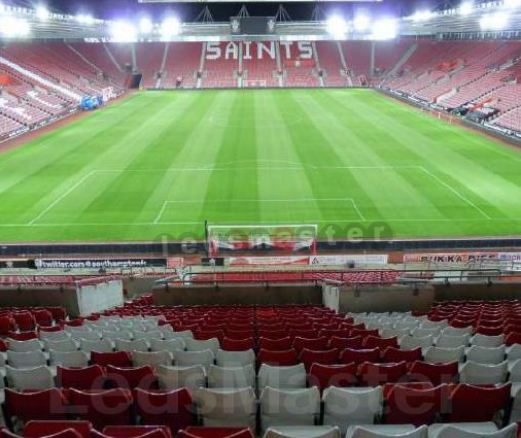
- Energy Efficiency: LED lighting solutions significantly reduce energy consumption and operational costs compared to traditional lighting systems. The use of energy-efficient LED fixtures, coupled with smart controls and scheduling, leads to substantial savings on utility bills and supports sustainability initiatives in athletic facilities.
- Customizable Environments: LED lighting systems offer unprecedented customization and personalization options, allowing facilities to create tailored lighting environments that support different sports, training modalities, and user preferences. Athletes and coaches can adjust lighting parameters to optimize performance, mood, and well-being throughout the day.
- Integration with Smart Technologies: LED lighting integrates seamlessly with other smart technologies, such as building automation systems, occupancy sensors, and environmental monitoring platforms. This integration enables comprehensive facility management, enhances energy optimization, and improves user experience through intelligent lighting control and automation.
- Health and Wellness Benefits: LED lighting supports athletes’ health and wellness by promoting circadian rhythm alignment, reducing eye strain and fatigue, and enhancing sleep quality and recovery. Human-centric lighting principles ensure that lighting environments prioritize occupants’ physiological and psychological well-being, contributing to overall performance and well-being.
- Longevity and Durability: LED lighting systems are built to last, offering extended lifespan, minimal maintenance requirements, and reliable performance over time. The durability and reliability of LED fixtures ensure uninterrupted training sessions and minimize downtime, maximizing operational efficiency and user satisfaction.
In summary, LED lighting innovations have transformed training facilities for athletes by optimizing performance, safety, energy efficiency, and user experience. As technology continues to advance, the potential for further customization and integration with smart technologies opens new possibilities for creating intelligent, interconnected environments that support athletes’ success and well-being.
B. Call to action for facility managers and stakeholders to embrace LED technology for improved performance and sustainability
Join the LED Revolution for Athletic Excellence and Sustainability!
Dear Facility Managers and Stakeholders,
Are you ready to elevate your athletic facility to new heights of performance, safety, and sustainability? It’s time to embrace the power of LED technology and revolutionize the way athletes train, compete, and thrive.
Why LED?
LED lighting innovations offer unparalleled benefits that go beyond traditional lighting systems. From enhanced visibility and focus to energy efficiency and environmental sustainability, LED technology is transforming athletic facilities worldwide.
Unlock the Potential:
- Enhanced Performance: Provide athletes with the optimal lighting environment they deserve. LED lighting systems improve visibility, reduce glare, and support circadian rhythm alignment, enhancing performance and safety during training sessions and competitions.
- Energy Efficiency: Say goodbye to sky-high utility bills and hello to significant savings. LED fixtures are energy-efficient, consuming less electricity and reducing operational costs while supporting your facility’s sustainability goals.
- Customization and Control: Tailor lighting environments to meet the specific needs and preferences of athletes, coaches, and staff. With customizable color temperature, intensity control, and smart automation features, LED lighting systems empower you to create personalized training experiences like never before.
- Durability and Longevity: Invest in lighting solutions that are built to last. LED fixtures offer extended lifespan, minimal maintenance requirements, and reliable performance, ensuring uninterrupted training sessions and maximizing operational efficiency.
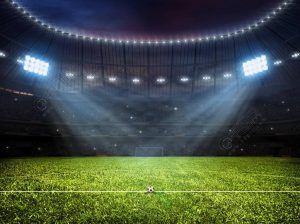
Take Action Today:
- Evaluate Your Lighting Needs: Assess your current lighting infrastructure and identify areas for improvement. Determine how LED technology can address performance, energy, and sustainability challenges in your facility.
- Engage Stakeholders: Rally support from stakeholders, including athletes, coaches, administrators, and sustainability advocates. Educate them about the benefits of LED lighting and garner their enthusiasm for embracing innovative solutions.
- Partner with Experts: Collaborate with lighting experts and solution providers who specialize in LED technology for athletic facilities. Seek guidance on design, implementation, and financing options tailored to your facility’s unique requirements and budget constraints.
- Lead by Example: Be a trailblazer in the sports industry by adopting LED technology and setting a new standard for excellence and sustainability. Showcase the transformative impact of LED lighting in your facility and inspire others to follow suit.
Together, Let’s Illuminate the Path to Athletic Excellence and Sustainability!
Embrace LED technology and unlock the full potential of your athletic facility. By harnessing the power of innovation, collaboration, and sustainability, we can create brighter, safer, and more sustainable environments where athletes can thrive and achieve their goals.
Are you ready to make the switch to LED? Contact us today to start your journey toward a brighter future!
Sincerely,
Beatus
CEO at Tachyonlight
This call to action emphasizes the benefits of LED technology while providing practical steps for facility managers and stakeholders to take action and drive positive change in their athletic facilities.

